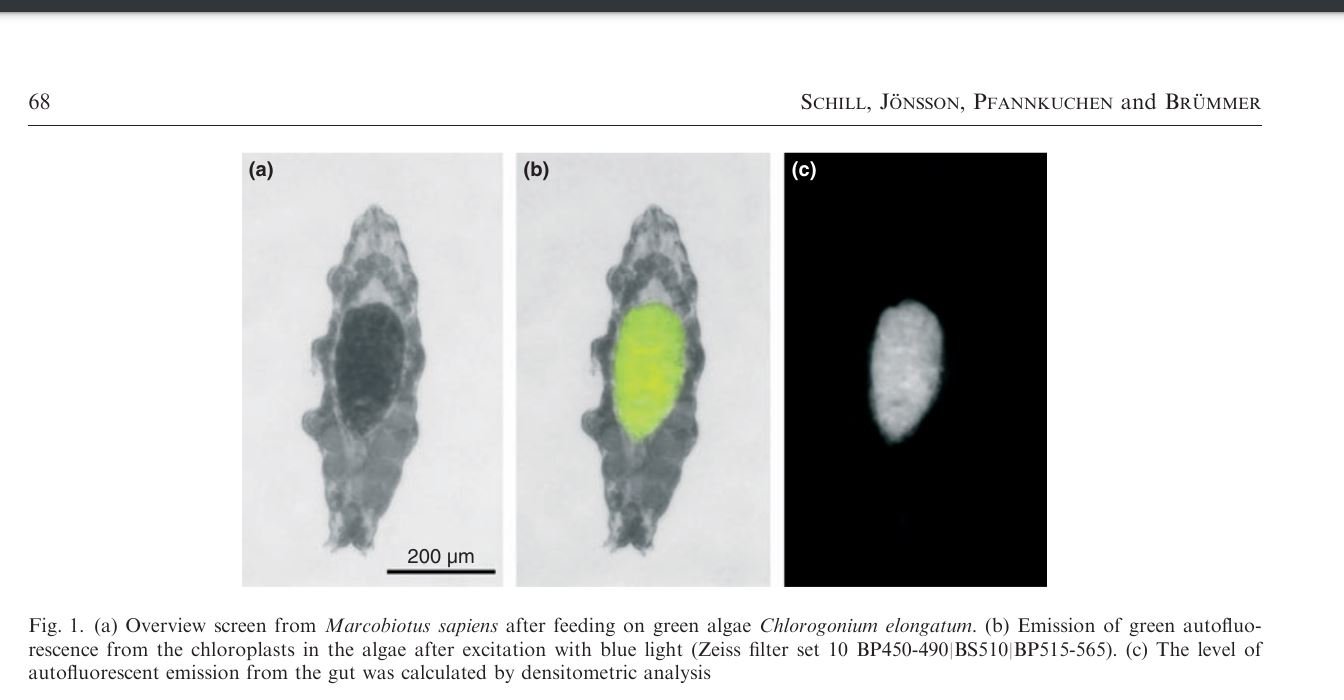What do Water Bears Eat?
More-Less the Same as “Real Bears” :)
Although Tardigrades (“water bears” or “moss bears”) were known to science for two centuries, it is surprising how little we knew about them since recently.
Before the advancements in molecular biology, we knew that some tardigrades were herbivorous while others were carnivorous, but we had no precise insights what was on their menu.
Maecenium blog is written is such way that it doesn’t represent watered-down version of scientific publications. Instead, we want to bring you real scientific publications and guide you through discoveries, helping you to come with the conclusions.
If you want to join us as a guest blogger, fill the form below as “Enthusiast” or as “Scientist”.
If you don’t know how to download scientific publications, we have a tutorial for you. It’s easy.
Herbivorous Tardigrades
Let’s read together:
In many species, material containing chlorophyll is often observed in the midgut. However, little information has been available until now on the actual food preference of tardigrades. Since trophic interactions within soil food webs are difficult to study, here we use a polymerase chain reaction–based approach as a highly sensitive detection method. The study was carried out to investigate the presence of chlorophyll matter in the gut of active specimens, based on sequence analyses of the chloroplast ribulose 1,5-bisphosphate carboxylase ⁄ oxygenase large subunit (rbcL) gene from mosses and algae. The sequences found in the gut of Macrobiotus sapiens (Tardigrade) were derived from the moss families Pottiaceae and Erpodiaceae, in Macrobiotus persimilis and Echiniscus granulatus (Tardigrade) from the moss family Grimmiaceae, and in Richtersius coronifer (Tardigrade) from the green algae genus Trebouxia. Furthermore, we show the emission of green autofluorescence from the chloroplasts in the algae within the gut of tardigrades and followed the progress of digestion over a 48-h period. The autofluorescent emission level declined significantly, and after 2 days, the signal level was similar to the level of the starved control.
First, let’s discuss about the advancements in technology and notice that PCR method (Nobel Prize), the same method used for so many test that are now routine, also helped solving this little mystery.
Next, how cool is the fact that different species of Tardigrades eat different plants, both moss and algae. From ecological perspective, this makes sense, because each species of Tardigrades has its own niche.
And finally, plant material was easily detected by using (auto)fluorescence microscopy of plants that are already digested by Tardigrades. Fluorescence microscopy has also shown that it takes about 48 hours for Tardigrades to digest their food.
Schill, R.O., Jönsson, K.I., Pfannkuchen, M. and Brümmer, F., 2011. Food of tardigrades: a case study to understand food choice, intake and digestion. Journal of Zoological Systematics and Evolutionary Research, 49, pp.66-70.

Carnivorous Tardigrade
Besides herbivores, there are also carnivorous Tardigrades, such as Milnesium Tardigradum.
Their food consists of Rotifers (sounds delicious), small animals that look like ancient amphoras.
I remember observing Tardigrades piercing and feeding on both Rotifers and Nematodes, worms 5x longer than Tardigrades.
All cultures were kept under standard laboratory conditions, that is, food (rotifer Lecane inermis Bryce, 1892) provided ad libitum
Reference: Morek, W., Stec, D., Gąsiorek, P., Surmacz, B. and Michalczyk, Ł., 2019. Milnesium tardigradum Doyère, 1840: The first integrative study of interpopulation variability in a tardigrade species. Journal of Zoological Systematics and Evolutionary Research, 57(1), pp.1-23.
Learn More About Tardigrades, Join the Challenge
We have decided to make a series of posts devoted to Tardigrades:
We would also like to call you to participate in Tardigrade Challenge and raise the awareness about them.
The first project for which we will be fundraising will be focused on Tardigrades. You may donate (form down below), or you may buy anything, things that you would buy regularly and thus provide seamless donation to our Scientists.
If you liked this style of posts, and if you want to join us, consider guest blogging, online volunteering or online internship (regulations regarding internships may vary for your country).




